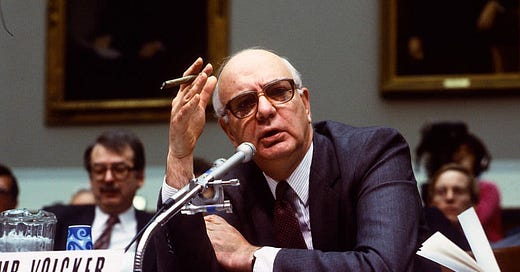Regulating Stablecoins and the Historical Parallels with Money Market Funds
We've seen this movie before
Stablecoins are exciting. The upcoming stablecoin legislation in the US represents a once-in-a-generation opportunity to upgrade the financial system. Students of financial history will see the parallels with the invention and growth of money market funds about a half century ago.
The money market fund was invented in the 70s as a cash management solution, principally for corporations.
At the time, US banks were prohibited from paying interest on balances held in checking accounts, and corporations were generally restricted from maintaining savings accounts. If a corporation wanted to get interest on idle cash, they would have to purchase US Treasury bills, enter into repo agreements, invest in commercial paper, or negotiable certificates of deposits. It was an annoying, high touch process just to manage cash.
Money market funds were structured to maintain a constant share value, with each share pegged at $1.
Reserve Fund, Inc. was the first money market fund. It launched in 1971 as “a mutual fund designed “as a convenient alternative to the direct investment of temporary cash balances” that often are put into such money market instruments as Treasury bills, commercial paper, bankers' acceptances or certificates of deposit”, beginning with $1 million in assets.1
Other investment giants followed soon after: Dreyfus (now BNY Mellon), Fidelity, and Vanguard all launched their own money market funds. Almost half of the growth of Vanguard's legendary mutual fund business in the 1980s was attributable to its money market funds.
Paul Volcker was highly critical of money market funds during his tenure as Fed Chair (1979 to 1987). He continued his crusade against money market funds even as recently as 2011.
Many of the same criticisms that are leveled by anti-stablecoin policymakers today mirror those made against money market funds a half century ago:2
Systemic risk and risks to safety and soundness of banking sector. MMFs do not have deposit insurance and lender of last resort facilities, unlike insured depositary institutions like banks. MMFs are therefore susceptible to rapid runs which could amplify financial instability and create contagion. There were also concerns that the shift of deposits from insured banks to MMFs would weaken the banking sector as banks lose their low-cost and stable deposit base.
Unfair regulatory arbitrage. MMFs offer a bank-like service by maintaining a stable $1 value, but without stringent regulatory oversight or capital requirements.
Undermine monetary policy transmission. Potentially weakens the Federal Reserve’s monetary policy tools since traditional monetary policy levers like reserve requirements imposed on banks became less effective as more funds flowed out of banks and into MMFs.
Today, money market funds hold over $7.2 trillion in financial assets. For reference, M2 (which largely excludes MMF assets) is $21.7 trillion.
The rapid acceleration of MMF AUM in the late 90s was a result of financial deregulation (the Gramm-Leach-Billey Act repealed Glass-Steagall and led to a wave of greater financial innovation), while at the same time the Internet boom led to better electronic and online transaction systems that increased the velocity of fund flows into MMFs.
See any patterns?
Unfortunately, the Reserve Fund met its end in the aftermath of the 2008 financial crisis. It held some Lehman Brothers debt securities that were written down to zero, resulting in a depegging event and a rash of redemptions.
I’d note that the regulatory battle over money market funds isn’t over, even a half century later. The SEC adopted money market fund reforms in 2023, which included higher minimum liquidity requirements and removing managers’ abilities to gate investor redemptions.






